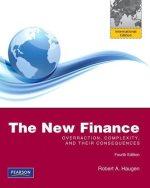Question
Can anyone help me??? Here we explore how dynamic lending can reduce limited enforcement. In particular, consider the model introduced in class, where the borrower
Can anyone help me???
Here we explore how dynamic lending can reduce limited enforcement. In particular, consider the model introduced in class, where the borrower repays when and only when the financial benefit of the future relationship, B(rt+1,Lt+1,,rT,LT), is at least as great as the financial cost of repaying the current loan, (1+rt)Lt. Let t=0 and T=3 that is, the borrower anticipates 3 more loans after repaying the current one. Assume that the borrower has a project that always doubles the value of the capital input, without risk e.g. a $100 loan can be turned into a certain $200 gross return. If the borrower repays, the net return would then subtract off the cost of the capital, principal and interest e.g. if r=20% and L=$100, the cost of capital would be $120 and the net return would be $200-$120 = $80. Thus the value of one loan would be $80. In calculating benefits of future loans, assume the borrower does not discount the future (i.e. values current and future income equally) and that he plans to repay all future loans when deciding whether to repay the current loan.
a. Assume all loans sizes and interest rates are the same: L0=L1=L2=L3=$100 and r0=r1=r2=r3=r, say. At what interest rate r would the borrower choose to repay the current (0th) loan?
b. Assume r0=r1=r2=r3=60%, and compare repayment behavior when L0=L1=L2=L3=$100 to a progressive lending strategy with L0=$25, L1=$75, L2=$125, L3=$175. In each case, which loan will the borrower default on?
c. Now add the expectation of a 4th loan: i.e. T=4. Consider r0=r1=r2=r3=r4=60% and L0=L1=L2=L3=L4=$100. Will the borrower repay the current (0th) loan? How does this compare to repayment behavior under these loan sizes and interest rates when T=3?
d. Return to the assumptions of part a. However, assume that capital is worth less to borrowers, so that their projects only increase the value of the capital by 50% rather than doubling it. (E.g. a $100 loan grosses $150 with certainty, rather than $200.) At what interest rate r would the borrower choose to repay the current (0th) loan?
Step by Step Solution
There are 3 Steps involved in it
Step: 1

Get Instant Access to Expert-Tailored Solutions
See step-by-step solutions with expert insights and AI powered tools for academic success
Step: 2

Step: 3

Ace Your Homework with AI
Get the answers you need in no time with our AI-driven, step-by-step assistance
Get Started


